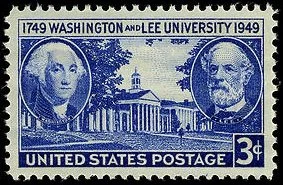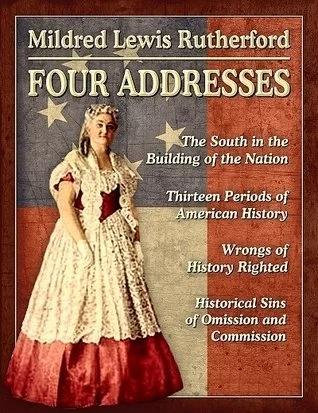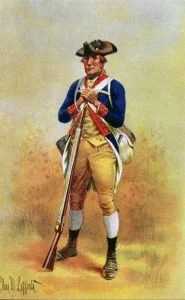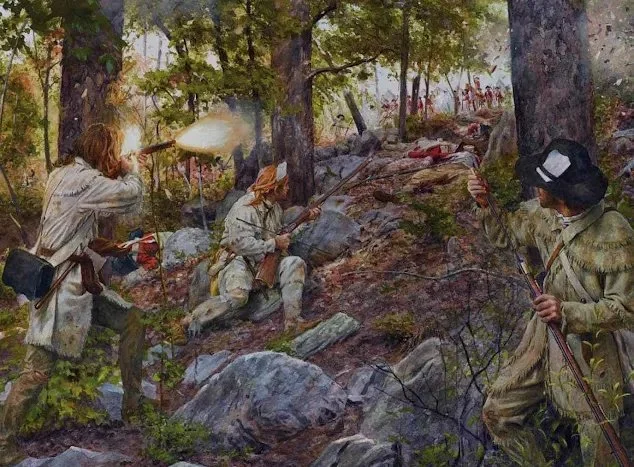Rebels or Revolutionaries?
Rehabilitating the Southern Campaign of the Revolutionary War
Are those who violently rise up against existing authority considered to be Rebels, or Revolutionaries? It’s a fair question, though the answer is often arrived at unfairly. Recall the old maxim “History is written by the winners”.
For example, was George Washington a rebel or a revolutionary? Technically he was both, since in his capacity as leader of the Continental Army he was leading a revolution against the governing authority of the Thirteen Colonies - in other words, rebelling against the British. If the American Revolution had failed (and it came very close to doing just that on more than one occasion), Washington would have been depicted in history books written by the victorious Loyalists as a rebel who was defeated by superior forces.
The British and Loyalists would be in the right; the patriots would be in the wrong. It’s also likely that Washington’s name would become a synonym for defeat, disaster and destruction in the service of an imperfect ideology that was destined to come up short against the rule of law. Students in history class would be taught thusly - right after they sang “God Save the Queen” each morning.
As we all know, Washington DID emerge victorious and has been celebrated ever since as the greatest hero of the Revolutionary War; father of a new nation. And the Loyalists? Over 100,000 voluntarily left, were compelled to flee or were forcibly exiled to Britain or Canada during and after the war. The histories written by American scholars generally do not treat them kindly, and the sentiments expressed by the Loyalists have been at least given short shrift, at worst scornfully dismissed.
Washington and Lee
It’s interesting to compare the glorification of Washington to the characterization of another Virginian General of a later era: Robert E. Lee.
Imagine how Lee would be portrayed today if “The War for Southern Independence” had succeeded. Even as a defeated “rebel”, Lee has achieved a considerable level of respect in the North and near-saintly reverence in the South due to his outstanding personal and professional qualities.
If the Confederacy had secured a lasting independence, Lee would today be depicted as an Olympian figure and the most noble of revolutionaries... at least, according to Southern historians. But of course, it was not to be.
The 18th century rebellion against Britain is known today as the Revolutionary War. The 19th century struggle by the Southern states to preserve their rights and way of life, known today as the Civil War, was commonly referred to by Northern historians and institutions in the immediate post-war era as “The War of the Rebellion”. The mammoth multi-volume publication of the United States Naval War Records Office first published in 1894 is titled the “Official Records of the Union and Confederate Navies in the War of the Rebellion”. This term was despised in the South as it intimated that the Southern states took up arms illegally against a legitimate authority.
Mildred Lewis Rutherford, a member of the United Daughters of the Confederacy and a renowned speaker, advised in the 1920s to “Reject a text-book that does not give the principles for which the South fought in 1861, and does not clearly outline the interferences with the rights guaranteed to the South by the Constitution and which caused secession. Reject a book that calls the Confederate soldier a traitor or rebel, and the war a rebellion…
…Ours was not a Civil War, it was the War Between the States, for the non-seceding States of the United States made war upon the seceding States of United States to force them back into the Union. Please call it so, and teach it so.”
How can it be that a Virginian who fought for freedom and liberty against Britain between 1776 and 1783 is heralded as a noble revolutionary, while a Virginian who fought for freedom and liberty against the United States between 1861 and 1865 is denigrated as a traitorous rebel? This question puts into sharp focus the biases that taint the historical distinctions between revolutionaries and rebels in American history.
Southern Victory
The entire Southern Campaign of the Revolutionary War seems to have faded in significance as expressed in the writings and commentaries of influential post Civil War historians.
Many of these scholars were based in northeastern Ivy League schools and were themselves influenced to varying degrees by the prevailing attitudes and prejudices formed during and after the time of the Civil War. An unbiased recounting of the actual events of the Southern Campaign, however, shows unequivocally that the battles in the South led directly to Cornwallis’ surrender at Yorktown and to the subsequent establishment of a sovereign and truly independent United States of America.
Most of the early battles of the Revolutionary War had occurred in New England and the state of New York. It is from these engagements that many of the “buzzwords” referring to the war devolve from. Bunker Hill, Saratoga, Lexington and Concord, Ticonderoga, the Boston Tea Party, Paul Revere’s Ride and Washington’s Crossing of the Delaware are all emblematic of the patriotic struggle - and all of them took place north of the Mason-Dixon line.
By 1778, the war had ground to a virtual stalemate and Washington’s troops were demoralized and mutinous. The British looked to the southern colonies as a way to open up the conflict to their advantage. It was a reasonable strategy that was very successful at first, as Charleston and Savannah were captured and occupied in 1778 and 1779 respectively.
The securing of the major southern ports was followed up in August of 1780 when the Continental Army under General Horatio Gates (the hero of Saratoga) was shattered at Camden in South Carolina. Unknown to the British, however, these seeds of success would eventually lead to a harvest of destruction. The disaster at Camden forced the patriotic forces to resort to guerilla warfare. Instead of engaging professionally trained British Redcoats in pitched battles, the Americans instead concentrated on controlling the countryside and succeeded in bottling up their adversaries in isolated forts and outposts.
Although the British on the coast were well supplied by the Royal Navy, provisioning the backcountry turned into a logistical nightmare. For one thing, the British command greatly overestimated the degree of Loyalist sentiment in the interior. While the Tidewater gentry did not want to see any disruption of their profitable trade with the mother country, the settlers on the frontier often felt taken advantage of due to their dependence on the coastal merchant class for trade goods.
Washington himself often complained about commodities merchants who bought his best Virginia tobacco at low prices only to market it for much more in Europe, and then proceeded to sell him substandard goods at inflated prices.
Another factor that stirred patriotic sentiments among the frontiersmen was the British policy vis-à-vis the Indians. The Proclamation of 1863 enacted after the French and Indian War preserved the huge swath of land between the Appalachians and the Mississippi river for the use of the native tribes who had lived there for centuries. Removing British rule would also remove the main barrier against westward expansion - and this would indeed come to happen over the ensuing century and a half.
Added to all of this was the method by which the British and Loyalists conducted the Southern Campaign itself. In an effort to swell their ranks, Negro slaves were promised freedom in exchange for service in the Loyalist militia. This, as might be expected, was not well received by those colonists who employed slaves on their farms and plantations. Finally, the British were undone by the wily machinations of Nathanael Greene and his forces following the debacle at Camden.
To Lose a Battle and Win a War
The Battle of Camden was perhaps the most devastating loss dealt to the patriotic forces in the war. Gates’ troops outnumbered the British under Cornwallis but the majority of his force consisted of green militia units who fled the field when confronted by the advancing redcoats.
American General Baron de Kalb was killed in action and Gates himself barely escaped with his life. The battlefield was carpeted with 1,000 dead and wounded Americans. The British suffered nearly 400 casualties, but captured 1,000 patriots, all of their artillery, and most of their supplies and ammunition. As Gates’ battle-ready forces only numbered 3,000 or so, the loss was crippling.
Cornwallis now had a free hand - or so he thought - in the Carolinas with no other significant force able to challenge him. His strategy was to mop up any organized patriot resistance while pushing north to eventually do battle with Washington’s Continental Army.
Washington received the news of Gates’ defeat at Camden and, seeing that the situation was one of great danger, called on his friend Nathanael Greene to assume command of the Southern Department. Greene was not only one of Washington’s best Generals, he was perhaps the one he trusted the most. Greene was a realist who was not going to fall prey to the kind of overconfidence that had led Gates to disaster.
In late 1780, Greene began to re-form the patriotic forces in the south around several regiments of Continentals, Lee’s Legion, and famed militia leader Francis Marion (said to be the model for Mel Gibson’s character in the movie “The Patriot”, although the film has been criticized as being historically inaccurate).
By the autumn of 1780, Greene was ready to put his novel strategy into action. Fully aware that Cornwallis had an advantage when it came to set piece battles, Greene embarked on a campaign of harassment meant to wear down the Redcoats.
Cornwallis was respected by the patriots who called him ‘the modern Hannibal”, after the legendary Carthaginian general who was the nemesis of the Romans. Greene sought to distract and delay the British by luring them into the interior, far from their sources of provisions on the coast. As their supplies ran low, the redcoats were forced to forage in the countryside and to make demands on the local population, Loyalists or not. The result was a surge in support for the patriots while anger and resentment towards the British rose apace.
Cornwallis was forced to post larger garrisons at the towns and forts he passed through in order to maintain control over an increasingly hostile populace, all the while keeping an eye out for Greene’s elusive main body of troops.
Modern estimates are that perhaps only 1/3 of the southern colonists harbored patriotic sentiments, 1/3 were Loyalists and 1/3 were undecided. Greene’s slow and steady campaign, combined with British arrogance and the depredations of their troops combined to swing the undecided 1/3 firmly behind the patriots. Greene watched all of this with satisfaction; things were going very much to plan.
This game of cat and mouse dragged on for nearly 6 months and saw Cornwallis’ redcoats trudge up and down the wild terrain of the Carolina backcountry, into southern Virginia at one point and then back into North Carolina. The British were being eroded away much like a rock being swept downstream by a strong current.
Turning of the Red Tide
When the Americans did battle with the British, it was on their own terms and on familiar ground. The Battle of King’s Mountain on October 7th, 1780 was a prime example. Cornwallis, upon receiving word that an American force was concentrating just south of the North Carolina border, detached 1,100 well-trained Loyalists to seek out and eliminate them.
As the British were traversing the rocky terrain near Blacksburg, South Carolina they were surprised by groups of frontier riflemen who raked the British formation with accurate fire from the woods. British commander Major Patrick Ferguson was killed and nearly 700 of his men were captured.
Undaunted by this defeat, Cornwallis then dispatched Colonel Banastre Tarleton, who had garnered an infamous reputation for alleged atrocities including killing prisoners, to attack a force of 700 militia and 300 Continentals under the command of General Daniel Morgan. Among the militia were about 150 sharpshooters from Georgia and North Carolina.
Tarleton was present at the Camden rout and was confident to the point of arrogance, believing that his force of 1,100 redcoats, highlanders and Loyalists were vastly superior to the opposing Americans.
Throwing caution to the wind, he threw his unrested troops against Morgan’s well-prepared forces. This time the militiamen held their ground and it was Tarleton who fled, leaving behind his artillery pieces, 110 dead and more than 800 captured. Morgan’s forces suffered only 73 casualties.
Greene now perceived that Cornwallis’ weakened army was ripe for the picking, so with a numerically superior force of 4,400 men he confronted 1,900 British at Guilford Courthouse in the present-day city of Greensboro, North Carolina. Cornwallis chose to fight a defensive battle and was technically victorious. His army emerged mortally wounded, however, losing 93 killed and over 400 wounded.
In the aftermath of the battle, Cornwallis could see that the tide had turned in favor of the Americans and his “Southern Strategy” had come to naught. He decided to make for Yorktown on Chesapeake Bay where Greene, Washington and the French navy would combine to seal his fate.
A Revolutionary Idea
To the average American, the critical Southern Campaign is mostly or completely unknown. The incomplete chronology runs from Lexington through Bunker Hill, pauses for Valley Forge, then ends suddenly at Yorktown. If all the facts are considered, it’s obvious that without Green’s ingenuous leadership of the Southern Department’s forces, there likely would not have been a Yorktown.
Over 7,000 redcoats would not have laid down their arms; instead, they would have linked up with Clinton’s army in occupied New York and then challenged Washington in his northern base.
Greene’s generalship has been lately re-evaluated by modern historians who look past the “spin” put on the Revolutionary War by previous chroniclers. A native of Rhode Island, Greene has had two large cities named for him: Greenville SC and Greensboro NC - both, notably, located in the South.
It may be too late to recast the events and personalities of the Revolutionary War under the clear and unbiased light of reason, since the popular conception of the war is one colored by the tint (or taint) of Civil War era prejudices. However, those who look beyond the version of events crafted by the spin doctors will find a stirring story of genius and glory whose pivotal chapters were played out on Southern soil by unsung Southern rebels and revolutionaries.
by Steve Levenstein, 2006 ©RLinc








